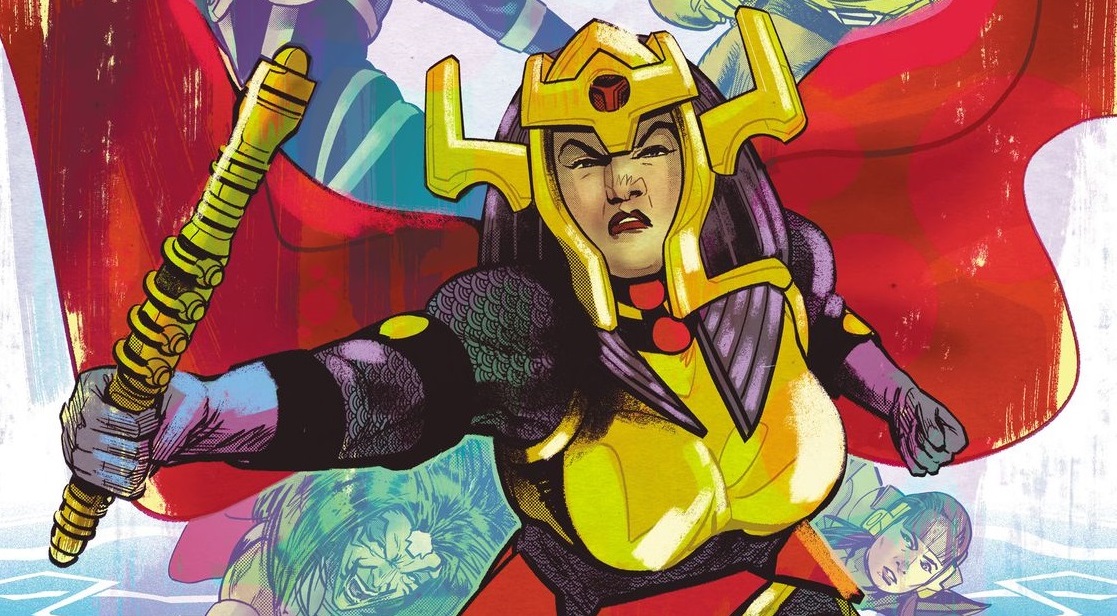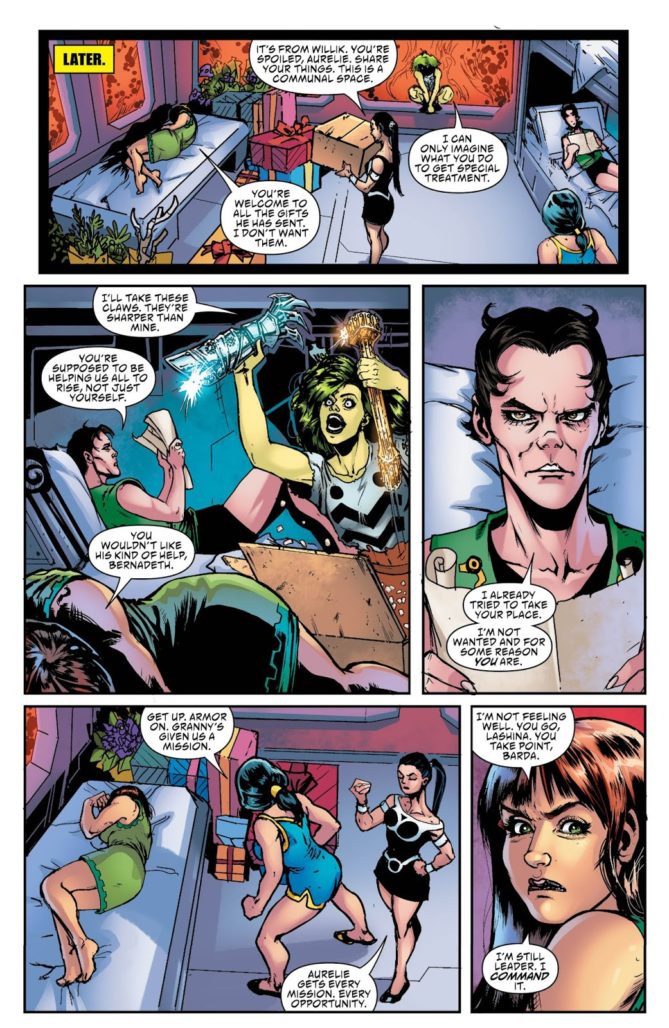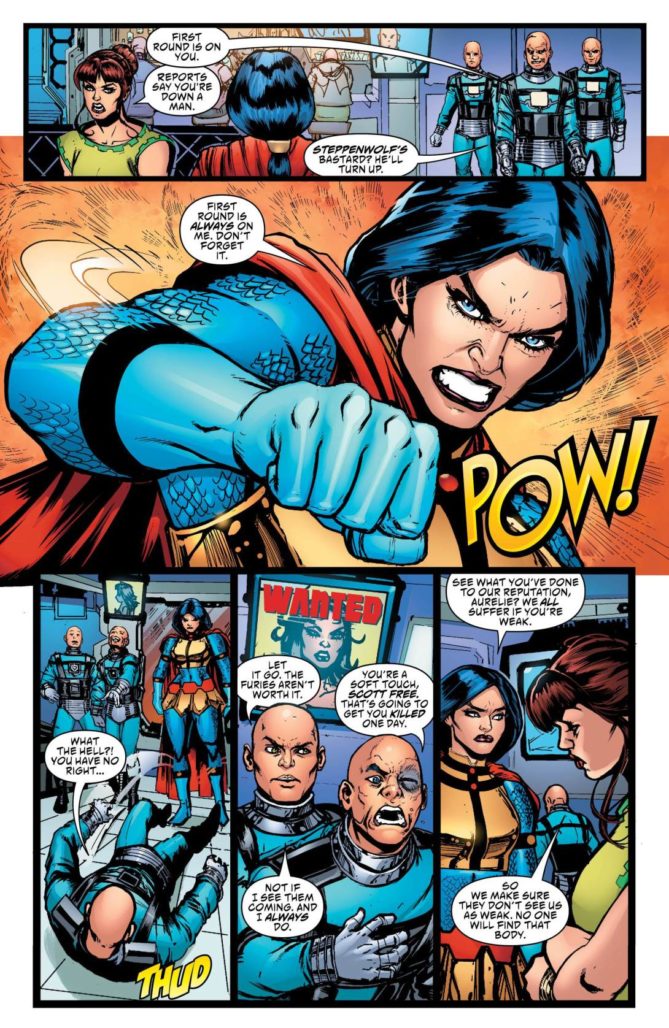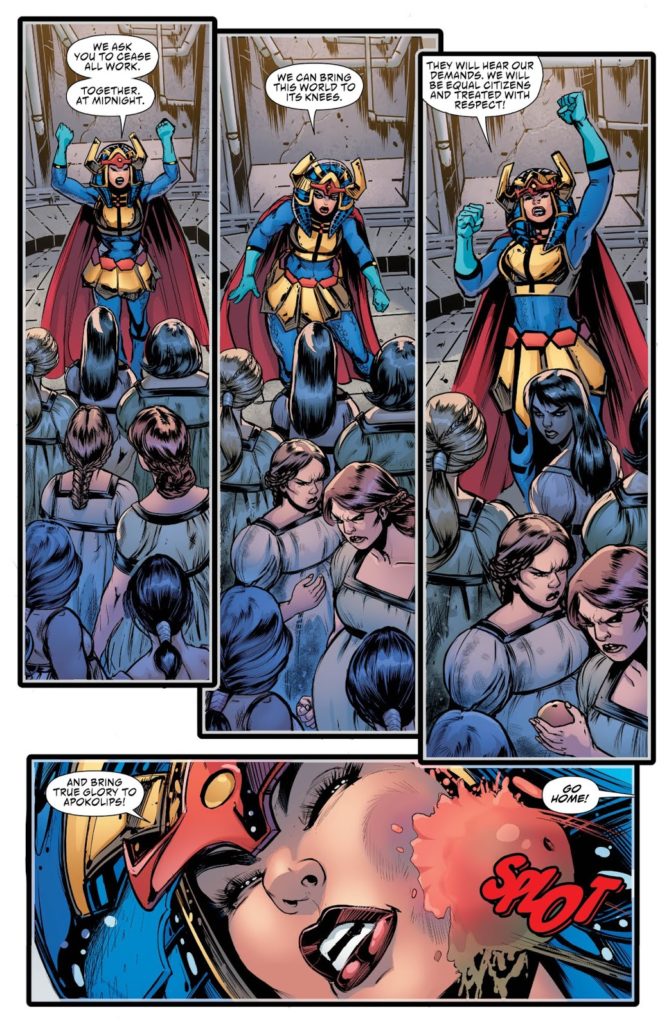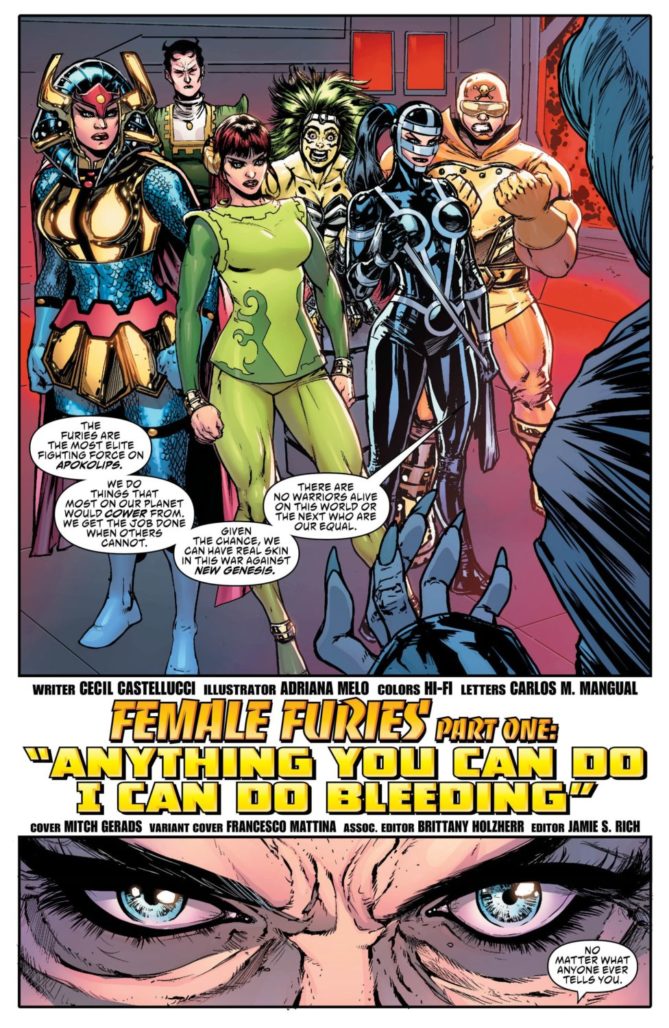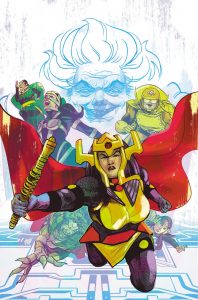
Writer: Cecil Castellucci
Artist: Adriana Melo
Colorist: Hi-Fi
Letterer: Carlos M. Mangual
Publisher: DC Comics
Early on in the second issue of the mini-series Female Furies, Aurelie, the leader of the titular group, tries to explain the extent of her emotional and sexual abuse at the hands of Protector Wilkis. The women in her orbit all react in different ways: with incredulity, with anger, with disgust. She’s met with a chorus of opinions: You have to be stronger. How could you let him do these things to you? Get yourself back together. It’s all a variation of the same sentence. What happened to you is your fault. Blame the victim; it’s her fault she was abused. It’s never the fault of the attacker, abuser, or rapist, it’s HER that’s the problem.
Herein lies the issue at the core of Female Furies: women coming to terms with and recognizing their abuse, then trying to figure out how to prevent it from happening to others. It’s a complex, overt source of patriarchy that keeps women down. Whether it’s Apokolips, or on Earth, Cecil Castellucci and Adriana Melo ask how these oppressive structures can be, if at all, broken down. It’s also a superhero comic, so heroes and villains can use their skills to their advantage.
I have never experienced such form of discrimination based on gender. I know countless women who went through horribly abusive situations, whether at work, when practicing a hobby, a sport, or simply walking in the street. These stories of abuse aren’t always broadcasted widely, but I’ve heard these stories all my life, whispered to me in confidence by friends. What Female Furies does is amplifying those whispers into a primal scream. All of the injustice weighing on these women is thrown at the reader explicitly. It’s impossible to ignore. Under the guise of an exploration of the reigning structure of Darkseid’s apocalyptic planet, we witness horrible situations, most of which have a real-world equivalent.
The story revolves around the schemes of Granny Goodness, one of Darkseid’s loyal warriors. She was by his side when he finally usurped the throne and in his bed after the victory. But after the war, she was relegated to a role of mentorship for the youth while all of her male peers were given positions of power. She is cast in the role of a mother since “it is what women are for”. Under her tutelage, she created a Strikeforce unlike any other. The Female Furies, led by Aurelie, and consisting of the strongest women on the planet, Big Barda, Lashina, Mad Harriet, Stompa and Bernadeth. Granny Goodness was hard on them their whole life to mold She was hard on them because women need to work twice as hard as men to obtain half of the respect men gets. Her Strikeforce becomes victim of their own success and Protector Wilkis, one of Darkseid’s close advisors, has taken a particular interest in their leader Aurelie. This sets a motion of events that puts the Female Furies on a collision course with Steppenwolf’s nephew, the pacifist Scott Free, and the entire construct of patriarchy and power on the planet.
What we see throughout the story is a series of events that leads to the emancipation and downfall of some of these women. There is a great deal of emphasis put on the story of Aurelie, the doomed leader of the group. She starts as a confident warrior, a bright flame able to withstand any challenge only to become completely broken at the hands of her emotional and sexual abuser. She is trying to find ways to escape her predicament, but there is nowhere to escape. Too many things are in motion around her. She’s a soldier and must follow orders, if she flees, the cycle of abuse will simply begin anew with another woman. There’s also the parallel story of Big Barda, whose loyalty towards her fellow warrior ultimately forces her to take a stand against the situation she’s in. She doesn’t believe Aurelie at first, thinking her weak and frail, unworthy of leadership. As the story progress, she comes to a different understanding of the oppressive forces that keeps women down. She’s unsure of what her next steps are until she meets Scott Free, the man who will later become Mister Miracle, who is in the process of escaping the planet to live free on Earth. She gains a new perspective, and a way forward and out of this misery. It’s this combination of wanting change and seeing a way to achieve it that breaks the shackles of Big Barda. The same emancipation doesn’t happen to all of the characters though. You can change society, but you may not change everyone’s heart.
Female Furies is a remarkable series. Cecil Castellucci has created a very thoughtful portrait of abuse and oppression. The energetic lines of Adriana Melo imbue the series with a sense of weight, almost as if the characters are weighed down by the environment they’re in. It’s interesting to see how they manage to recontextualize the world of Jack Kirby’s New Gods and bring in a new, fresh look at the Fourth World and its lore. I was intrigued by the series, especially as it focuses on Granny Goodness (a character I personally detest) and how her story is influenced by the circumstances of her environment. I came out with a better perspective and understanding of Jack Kirby’s Fourth World. When I was reading this series, Melo’s art style coupled with the science fiction setting reminded me of the long-forgotten yet excellent graphic novel 7 Against Chaos by Harlan Ellison, Ken Steacy and Paul Chadwick from 2013. I hope Female Furies doesn’t suffer the same fate as 7 Against Chaos. It’s a wonderful addition to the New Gods Pantheon that you should seek out.


